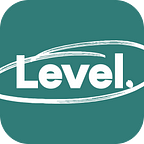Pitching the forest
The first fruit of Level’s renaming / rebranding process from Magnazine to Level is a gorgeous pitch deck by my co-founder Alex. He did a beautiful job of capturing Level — what we’re trying to do and how we’re trying to do it and why we’re doing it in that way — in a few brief sentences and images, so that someone with zero experience in adult education or prison education can grasp it and, we hope, become intrigued, inspired, and invested.
The new deck made me think of something I’d first encountered in a paper by Jo Boaler, a Stanford professor of math education whose website, books, and MOOCs help not only teachers but also students of all ages to better understand how the human brain learns math and then how to teach and learn in ways that leverage that understanding. Boaler had introduced me to the concept of compression, whereby the brain becomes gradually more comfortable with a concept until it becomes almost instinctual. I love this passage that Boaler quotes, from William Thurston, a winner of the Fields Medal (the Nobel Prize of math):
Mathematics is amazingly compressible: you may struggle a long time, step by step, to work through the same process or idea from several approaches. But once you really understand it and have the mental perspective to see it as a whole, there is often a tremendous mental compression. You can file it away, recall it quickly and completely when you need it, and use it as just one step in some other mental process. The insight that goes with this compression is one of the real joys of mathematics.
(I imagine that compression applies to other subjects as well. Like reading, for example; if you still had to think through recognizing letters, you might still be reading the first sentence of this post.)
Part of good teaching is reading your students and where they are in their compression process. That’s how you know which terminology to use or avoid, where to pause and explain more, how long a lesson will take. I didn’t have to think hard about these estimations as a math teacher; I pretty much knew where my students were getting stuck, because I had gotten stuck in the same places.
But just because I could do it with my students didn’t mean I could do it with potential collaborators or funders! In fact, I struggled — still struggle — a lot with getting anyone outside our project sold on it. Turns out, most people are not engaged by plunging directly into the ins and outs of various pedagogical and learning science theories. I hadn’t just lost the forest for the trees — I’d lost it for the microscopic water veins in an individual leaf on an individual tree.
And I couldn’t figure out a way to zoom back out. Level had grown so directly, so intuitively, so gradually, from my experiences and my collaborators’ experiences and, most crucially, what we’d learned from all the students and inmates and student-inmates we’ve served, that I hadn’t noticed how much I had compressed them or how I had gotten there.
(by Kate Mullan @ Level)
